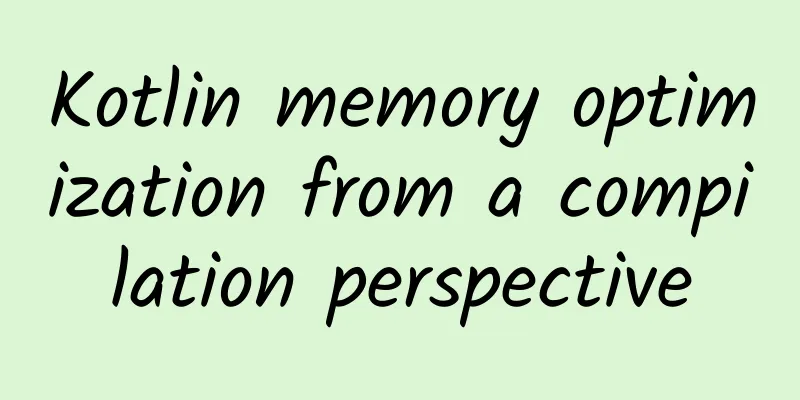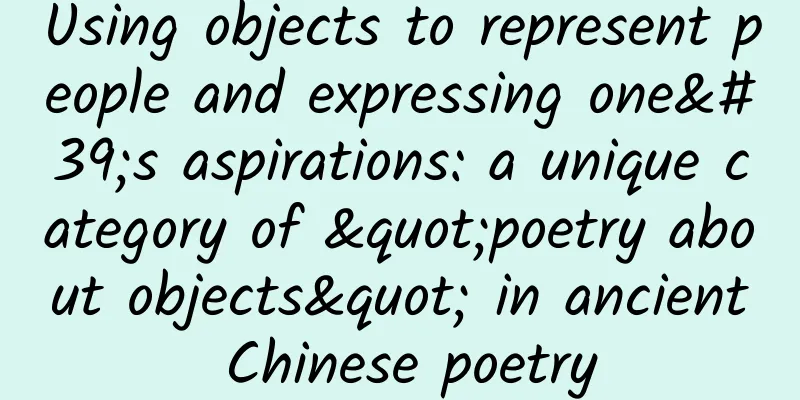Kotlin memory optimization from a compilation perspective

|
Author: Yan Yongjun, Unit: China Mobile Smart Home Operation Center Labs GuideToday we are going to talk about Kotlin, a static programming language developed by JetBrains for modern multi-platform applications. Kotlin can be compiled into Java bytecode or JavaScript, which is convenient for running on devices without JVM. In addition, Kotlin can also be compiled into binary code and run directly on the machine. At Google I/O 2017, Google announced first-class support for Kotlin on Android. Currently, Kotlin has become the preferred language for Android application development. Kotlin has many advantages over Java, such as null safety, easier-to-use Lambda expressions, support for extensions, numerous syntax sugars, etc. However, few people mention Kotlin's memory optimization for Java from a compilation perspective. Here we take a peek through decompilation. Part 01 Java inner class holds reference to outer classThere is a common perception in Java that inner classes in Java hold references to outer classes, and improper use can easily cause memory leaks. See the following example. We write the following code to verify. We first create a parent class to observe whether the subclass will call the finalize method. public class BaseActivity extends AppCompatActivity {We create a subclass, and in the subclass we create a Thread that will not terminate. public class TmpJavaActivity extends BaseActivity{Through testing, we can find that the finalize method of BaseActivity can never be called, that is, the external class TmpJavaActivity can never be recycled. We use the decompilation tool jadx to observe the decompiled smail code. From the above decompiled smail code, we can see that Java will pass the outer class object as a parameter to the inner class object. Once the inner class cannot be released, the outer class will not be released, thus causing a memory leak. Part 02 Kotlin inner classes do not necessarily hold references to outer classes We can write the same code above in Kotlin as follows: class TmpActivity : BaseActivity() {By observing the logs, we found that the external class TmpActivity can be recycled normally. Let's take a look at the smail source code. From the above smail source code, we can see that, unlike Java, inner classes in Kotlin will be compiled into a normal class. Because the actual operation of inner classes does not depend on outer classes, after compilation, the outer class will not be passed to the inner class as a parameter of the inner class constructor, that is, the inner class will not hold the application of the outer class, so it will not cause memory leaks. But what if the inner class actually needs to hold a reference to the outer class? Let's look at the following code. class TmpActivity : BaseActivity() {Observe the decompiled smail source code as follows From the above source code, we can see that when constructing an object of an inner class, a reference to the outer class is passed to the inner class, causing a memory leak. From the above two examples, we can see that in Kotlin, inner classes do not hold references to outer classes unless necessary, which reduces the possibility of memory leaks compared to Java. |
<<: Application of workflow engine in vivo marketing automation
>>: Why do you advise everyone to wait for the official version of iOS 15.6? There are four reasons
Recommend
Summary of WeChat Mini Programs Adapted to iPhone X
This article mainly introduces some problems and ...
How to make an online promotion plan? How to formulate a promotion plan?
How to make an online promotion plan? How to form...
Failure + delay, where will Europe's launch vehicle go?
Recently, the European Space Agency announced the...
If you want to do a good job in conference marketing activities, you need to pay attention to these 3 key points?
As an important part of marketing , conference ma...
The most inaccurate indicators measured by smart watches are actually these...
From heart rate, blood pressure, sleep to energy ...
How to win at mahjong? Remember these postures and tricks, a must-have for winning during the Spring Festival
It is said that Sichuan people love playing mahjo...
How much does it cost to make a car moving app in Zhangjiakou?
There is no fixed price for the production of Zha...
3 stages of APP user growth!
Today I’m going to join in the fun and talk about...
9 factors that content marketing veterans won’t ignore when planning
Effective marketing increasingly relies on storyt...
Does washing your hair every day cause hair loss? Here are 5 truths about washing your hair →
Do you have it too? Such experience ↓↓↓ Scalp itc...
If JAC Volkswagen’s first SUV is an iEV7S with a different shell, would you still buy it?
Ever since the establishment of the JAC Volkswage...
How a programmer can increase his net worth 100 times in ten years
[[150355]] About ten years ago, three grassroots ...
Autonomous driving received $5 billion in investment last quarter, exceeding the total of the past four years
According to BloombergNEF data, private market in...
How to place 360 information flow ads?
Compared with Toutiao ads, Baidu information flow...
One picture tells you how drastic the temperature drop is! Global warming is said to be a problem, so why are winters getting colder?
Coming, coming It's coming back with the cold...









